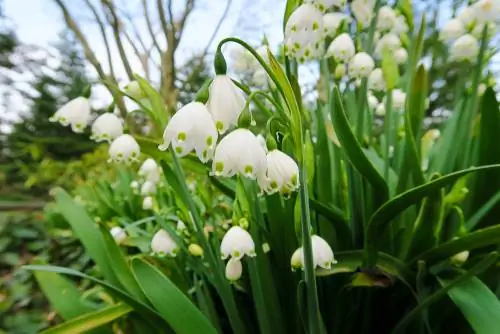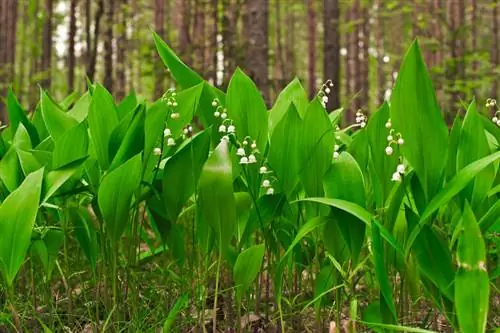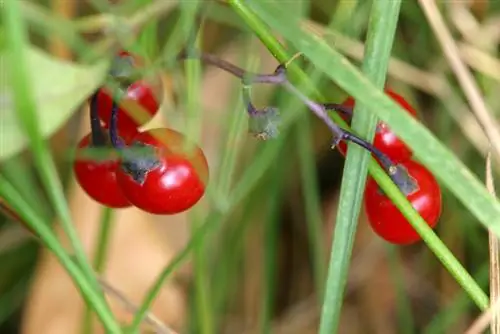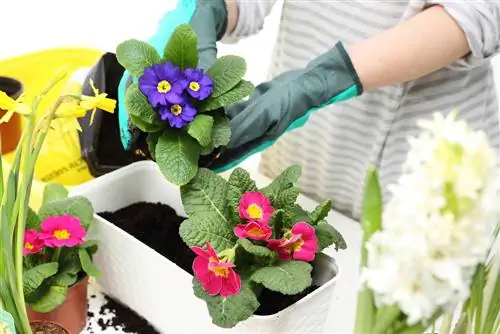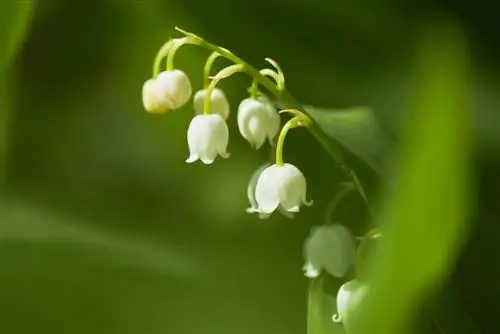- Author admin [email protected].
- Public 2023-12-16 16:46.
- Last modified 2025-01-23 11:22.
Both plants seem to have a preference for a certain month of the year. At least that's what their names suggest. If you pay attention to a single flower at a time, you will see similarities in shape and color. Are the two plants closely related to each other?
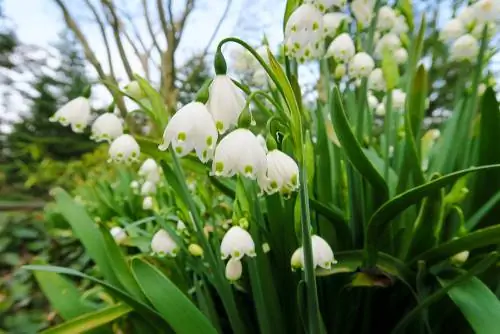
Are March cups and lily of the valley related?
Märzenbecher and lily of the valley are not related to each other: the former belongs to the amaryllis family, while the latter belongs to the asparagus family. Both plants have white, bell-like flowers, but different leaf shapes and flowering times.
The families and occurrences
Märzenbecher and lily of the valley are not related. They come from different families. The March cup is part of the amaryllis family, while the lily of the valley is a member of the asparagus family.
Märzenbecher and lily of the valley are both considered to be onion plants. But only the Märzenbecher sprouts an onion. The lily of the valley, on the other hand, grows from rhizomes.
Of course they both occur in forests. The lily of the valley prefers simple deciduous forests and meadows. The Märzenbecher also requires moist soil, which is why there are usually streams and rivers nearby. But both species are also often cultivated in private gardens.
Similarities in flowers
One thing they have in common is the color of the flowers and also the shape of the flowers. Both flowers are white and resemble a bell. The lily of the valley also bears witness to this with its name. The Märzenbecher is also popularly known as the Märzenglöckchen.
Tip
How about pink lilies of the valley? There actually is a variety that doesn't bloom typically white.
There are differences too
The flowers of these two plants really cannot be confused with each other. Because when the lily of the valley blooms in the merry month of May, the March cup has long since finished its flowering period. Anyway, here is the list of the differences:
- Lily of the valley blooms in May
- bears 5 to 17 small flowers per stem
- Flowers have no patterns
- red berries form from July
- Märzenbecher blooms from February to April
- bear one to two flowers per stem
- the petals have a yellow-green dot at the tip
The Leaves
As similar as the flowers are, the leaves of these two plant species can be easily distinguished. While they are thin and long in Märzenbecher, in Lily of the Valley they have an elongated oval shape. They are a lot wider than the spring knot flower, as the Märzenbecher is also called.
The leaves of the mallow can easily be confused with wild garlic. This is edible and is often collected in the wild. But the leaves of the lily of the valley are poisonous and should not end up in the collection basket. By the way, the Märzenbecher is also poisonous.
They are protected
The Märzenbecher, which is a protected species in this country, may neither be picked in the wild nor its bulbs dug up. The lily of the valley must not be dug up either, but a small bouquet for home is allowed. Attention: Stricter rules apply to it in some European countries.

